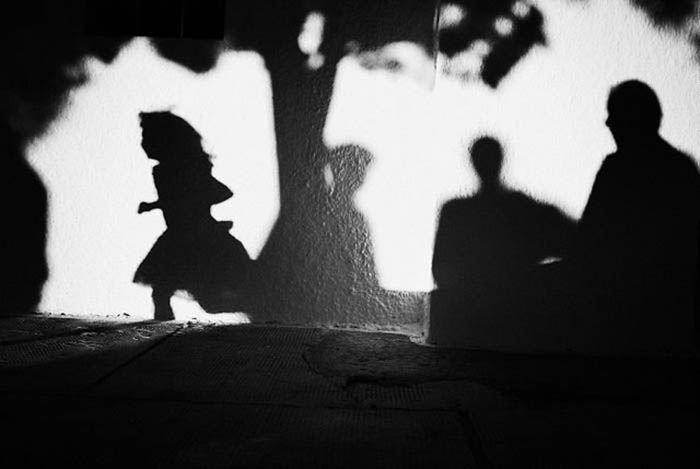
By: Valerie Jardin
Many photographers are timid about “shooting strangers” on the street which keeps them from even trying. Street photography is all about telling a story in a single frame and that’s a beautiful thing.

It’s normal to be reluctant or shy, but these 12 steps will gently ease you into the wonderful world of street photography that exists in your hometown or anywhere else your travels take you. There are lots of stories out there waiting to be told. Get your camera and let’s go!

1- Do I need permission?
In most countries, as long as you are in a public place, it is perfectly legal to photograph people for either editorial or fine art purposes. However, if you intend to use any of those images for stock photography, meaning using that photograph in advertising, then you need the proper model release form signed. Each country has its own laws and regulations about this, so please do your research before you photograph strangers in the streets.

2- Hit the streets with a friend.
It’s generally better to shoot street photography on your own. Why? You are more invisible that way. But if going on your own is a bit intimidating at first, take a friend along. It will help emboldened you, but also surprise you at how differently two people see the world.

3- Start in a crowd.
In my workshops I encourage new street photographers to start with a busy public place such as a street market or an outdoor event as a comfortable start. You are more invisible in a crowd and can more easily overcome your fear of photographing strangers. Street performers are excellent street photography subjects to start shooting. After all, they are there to be seen and are used to being photographed plus they are part of the culture of the place you are visiting. Buskers perform to make a few bucks, so shoot away, and be generous with what you toss in their hat!

4- Find a stage.
As much as I enjoy walking for hours searching for that special moment, I often do a lot of standing and waiting if I find a really compelling background to use as a stage. Once you find your stage, be patient and eventually the right people will walk through your frame. When I am traveling I like to add a sense of place by carefully selecting the architecture in the background or finding signage in the local language.

5- Don’t forget silhouettes
Silhouettes are interesting subjects only if they are easily recognized. There should be no doubt as to what the image is. People with umbrellas, bicyclists or lovers holding hands are terrific silhouette images.

6- Street portraitures
I love the thrill of engaging a subject in a conversation! For some of you this may be more intimidating than shooting candidly. For others, you can get over the apprehension by asking permission to make a portrait, so they are more at ease with the process. If you ask permission and it is granted, take your time. Then show them the picture on the back of your camera. Tell them why they caught your attention. Everyone enjoys a compliment!

7- Photographing children.
Basically, if they are in a public place, you have just as much right to photograph children as anybody else. Even so, it’s a good idea to get the okay from a parent first. My way is to simply nod towards them, show my camera and wait for their nod back. For the times when no one is around to give you the okay, use your best judgement.

8- Should you give a copy of the photograph to your subject?
When I do candid shots, I occasionally interact with my subject after I make the photograph. But mostly I’m invisible and they never know I took a picture. When I make a street portrait I engage them in a conversation and show them the picture on the back of the camera. If they ask for a copy I give them my card so they can email me for a digital file of their portrait. That’s the least you can do to thank them for their time.

9- Be confident and respectful.Â
You are not doing anything wrong, but if someone objects to having their picture taken, don’t shoot! It’s not worth an argument. You may be well within your legal rights, but the most important thing is to be respectful of others. I would also urge you to avoid photographing people in vulnerable or embarrassing situations. Put yourself in their shoes. Would you feel comfortable being photographed that way? If the answer is no, then use your common sense and move on.

10- Follow your gut instinct.Â
That’s an important step towards making street photography an enjoyable experience and one I always teach my students right away. If the situation feels wrong or dangerous, then it probably is. Trust your gut.

11- Color or B&W?Â
This is totally a personal choice. There is no right or wrong answer. I prefer to process my images in black and white for its timeless quality, but some images are better in color and sometimes the subject is color. Let your artistic eye guide this decision. But I will say that another advantage of monochrome is its ability to remove any distracting colorful elements from the frame, allowing the viewer to the be more drawn to the subject.

12- It’s your vision.Â
Don’t let anyone tell you what does or doesn’t qualify as street photography, or what camera you should use. There are no official rules here. Street photography is all about telling a story, communicating an emotion. Your camera is an extension of your own artistic vision. Be patient. Trust your gut.

Go out there and have fun!


